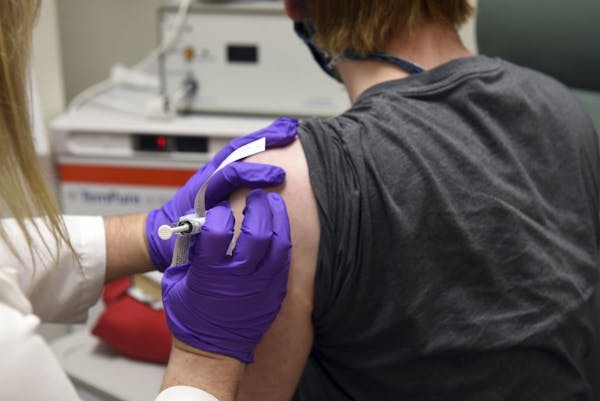Another 3,080 new COVID-19 infections were reported Tuesday by Minnesota health officials, one of the lowest daily reports in several weeks.
However, testing volume was also relatively low, with 27,432 test results sent to the Minnesota Department of Health on Monday. By comparison, the previous five days saw a daily average of 59,000 tests.
Twenty-two more people died from COVID-19 complications, with 15 of them residents of long-term care facilities.
Minnesota officials will be watching this week to see if case counts rise as a result of holiday travel and gatherings.
"It is really in the next few days this week that we anticipate seeing any effects from Thanksgiving," state Health Commissioner Jan Malcolm said Monday.
State officials are expected to announce details of the state's COVID-19 vaccine plan on Tuesday afternoon. Highest priority will be given to health care workers and long-term care residents, but it could take several weeks for Minnesota to receive enough doses to fully vaccine those populations.
The vaccine, made by Pfizer, is expected to receive federal approval on Thursday. Other vaccines are in the pipeline.
In the meantime, public health officials continue to advise the public to follow safety guidelines — mask-wearing, social distancing, frequent hand washing — to limit the spread of the highly infectious coronavirus.
Minnesota is in the third week of a shutdown of restaurants, bars, fitness centers and entertainment venues which is set to expire next week. Social gatherings are limited to immediate household members as well.
Gov. Tim Walz said Monday that he will announce later this week whether that closure order will continue or be modified.
The measures were implemented partly in response to rising hospitalizations that followed the surge in new COVID-19 infections.
"Hospitals are still seeing high volumes of patient need," Malcolm said.
Among 93 hospitals that reported occupancy data to the state, 33 indicated that their intensive care units were more than 95% full.
However, pressure has eased over the past week, with 359 patients requiring intensive care, down from a high of 402 on Dec. 1.
There were an additional 1,245 COVID-19 patients in non-ICU beds, a one-week decline of 10%.
Most people experience mild or no symptoms if they get sick from the coronavirus, though they remain infectious. Those with underlying health conditions, such as heart, lung or kidney disease, are most likely to develop complications.
Since the pandemic began, an estimated total of 314,957 — 87% of all known cases — are considered to be no longer infectious and do not require isolation.
Glenn Howatt • 612-673-7192
Carolyn Parnell, 'trailblazer' who served as Minnesota's first IT commissioner, dies


